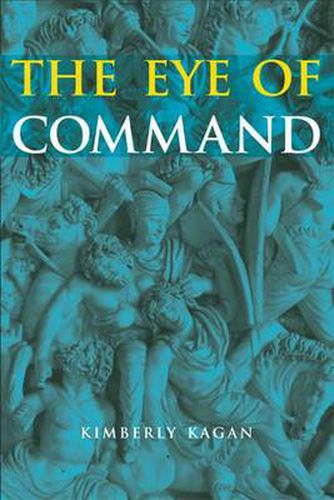Readings Newsletter
Become a Readings Member to make your shopping experience even easier.
Sign in or sign up for free!
You’re not far away from qualifying for FREE standard shipping within Australia
You’ve qualified for FREE standard shipping within Australia
The cart is loading…






Published in 1976, Sir John Keegan’s
The Face of Battle
was a ground-breaking work in military history studies, providing narrative techniques that served as a model for countless subsequent scholarly and popular military histories. Keegan’s approach to understanding battles stressed the importance of small unit actions and personal heroism, an approach exemplified in the narratives produced by reporters embedded with American combat troops in Iraq. Challenging Keegan’s seminal work, Kimberly Kagan’s
The Eye of Command
offers a new approach to studying and narrating battles, based upon an analysis of the works of the Roman military authors Julius Caesar and Ammianus Marcellinus. Kagan argues that historians cannot explain a battle’s outcome solely on the basis of soldiers’ accounts of small-unit actions. A commander’s view, however, helps explain the significance of a battle’s major events, how they relate to one another, and how they lead to a battle’s outcome. The
eye of command
approach also answers fundamental questions about the way commanders perceive battles as they fight them - questions modern military historians have largely ignored.
$9.00 standard shipping within Australia
FREE standard shipping within Australia for orders over $100.00
Express & International shipping calculated at checkout
Published in 1976, Sir John Keegan’s
The Face of Battle
was a ground-breaking work in military history studies, providing narrative techniques that served as a model for countless subsequent scholarly and popular military histories. Keegan’s approach to understanding battles stressed the importance of small unit actions and personal heroism, an approach exemplified in the narratives produced by reporters embedded with American combat troops in Iraq. Challenging Keegan’s seminal work, Kimberly Kagan’s
The Eye of Command
offers a new approach to studying and narrating battles, based upon an analysis of the works of the Roman military authors Julius Caesar and Ammianus Marcellinus. Kagan argues that historians cannot explain a battle’s outcome solely on the basis of soldiers’ accounts of small-unit actions. A commander’s view, however, helps explain the significance of a battle’s major events, how they relate to one another, and how they lead to a battle’s outcome. The
eye of command
approach also answers fundamental questions about the way commanders perceive battles as they fight them - questions modern military historians have largely ignored.